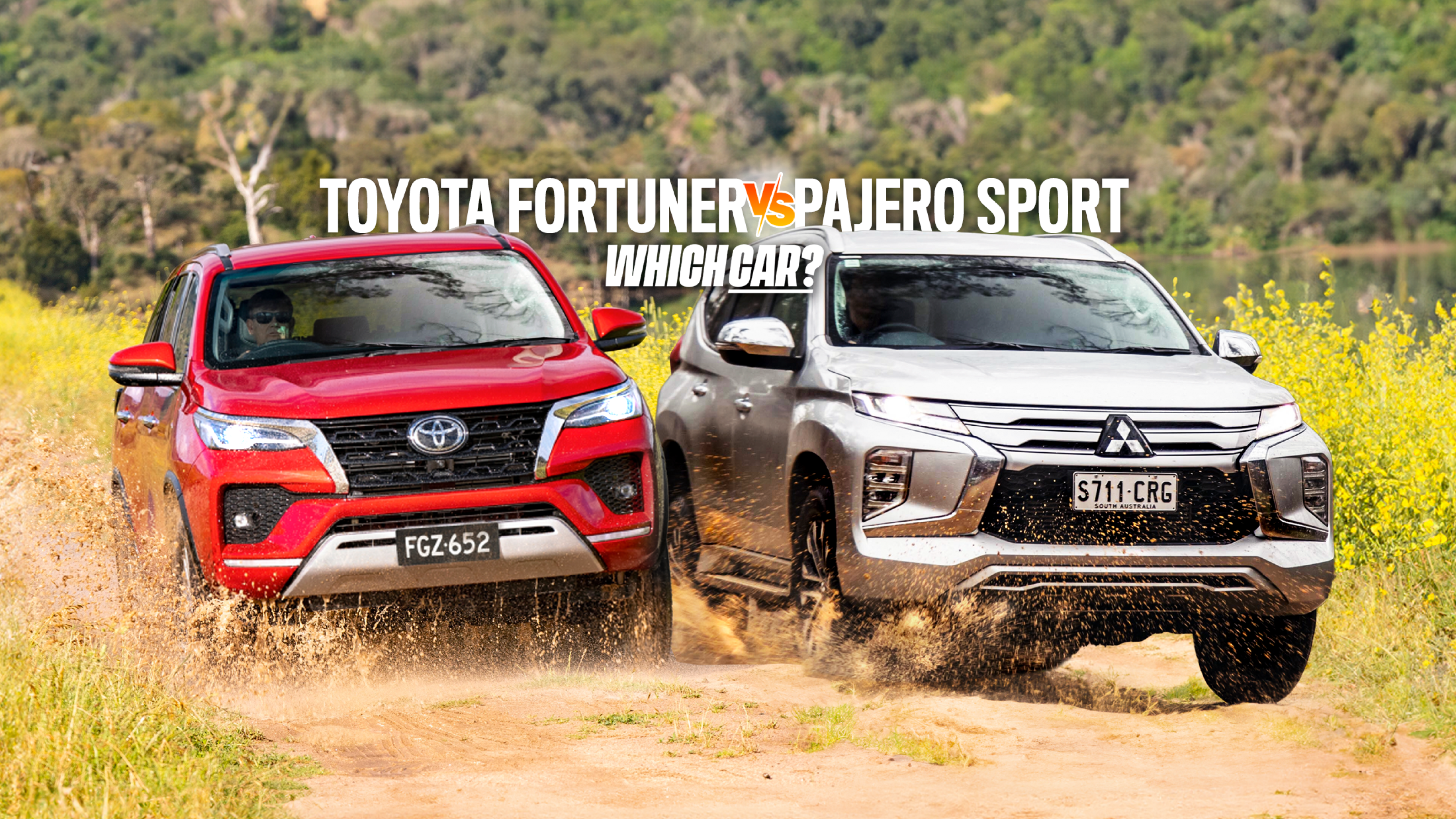
2023 Mitsubishi Pajero Sport
Things we like
- Industry-leading warranty and servicing
- Economical engine
- Well-featured for a low price
Not so much...
- Short on tow capacity
- Ride quality
- No safety rating
2023 Toyota Fortuner
Things we like
- Great off-road
- Spacious inside
- Toyota service network
Not so much...
- Gruff diesel engine
- Lacks towing capacity
- Ride quality
There is plenty to choose from in the large SUVs category, but if you’re on a budget, buying in is getting harder as the costs of these wagons creep up.
There are some large SUVs that were once very affordable but now spill well into six figures. If that’s too rich for you, and you need a budget friendly seven-seat SUV 4WD from a long-established brand, there are still some models that have not suffered from bracket creep. These are wagons such as the Mitsubishi Pajero Sport and Toyota Fortuner.
Mitsubishi and Toyota are among the best-known brands in Australia with large, well-established dealer networks, meaning not only are they easier to find a dealer to buy from, but also to get a service or buy spare parts or accessories.
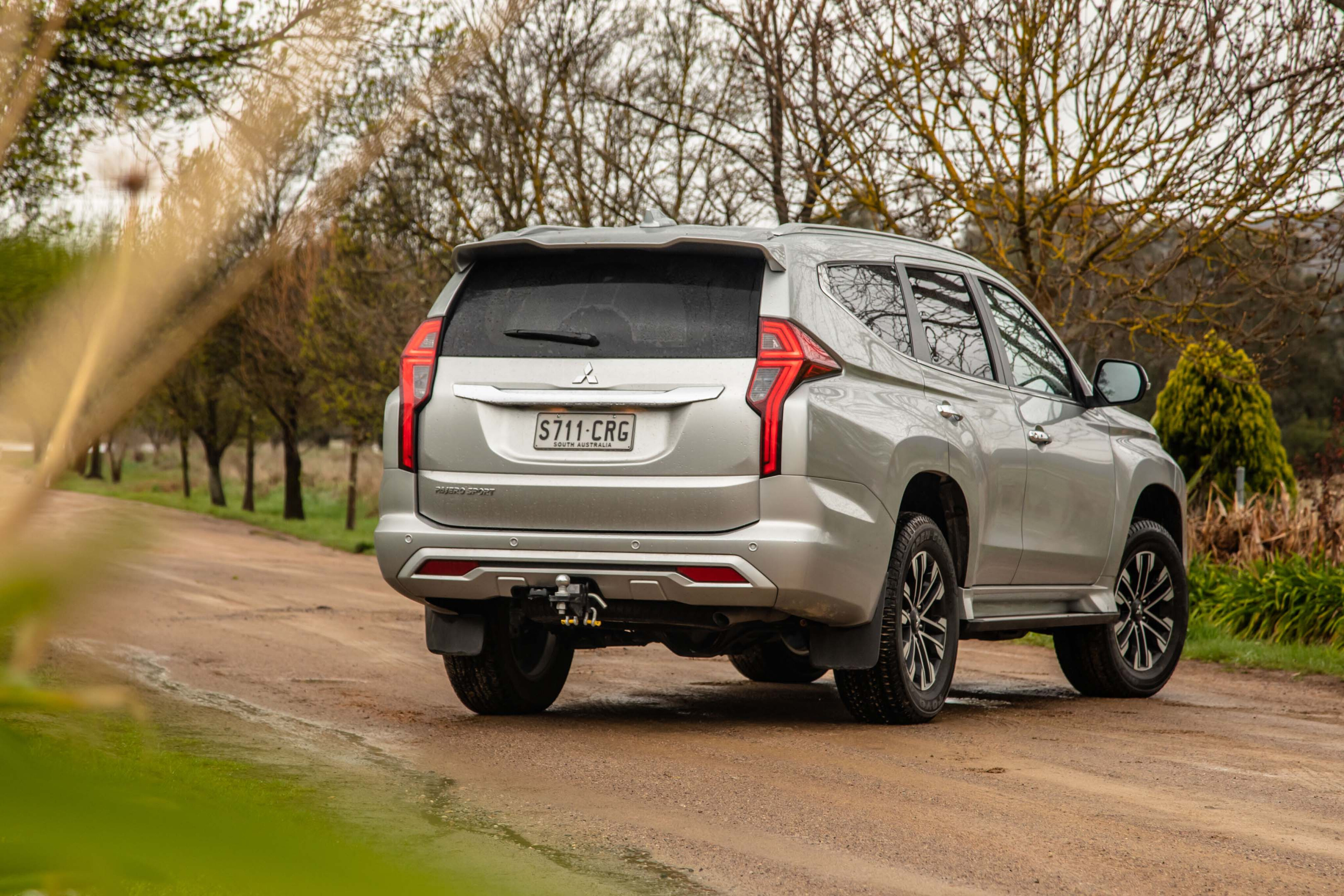
It’s no secret both the Pajero Sport and Toyota Fortuner are not fresh models on the market; both have been on sale since 2015.
The Pajero Sport has a confirmed replacement coming by 2025, following the new Triton (on which the new model will be based) which arrives here early 2024.
As for the Toyota Fortuner, that will likely soldier on for a few more years, awaiting the arrival of new HiLux (on which Fortuner is based) in 2025, sharing its all-new Toyota New Global Architecture (TNGA) with Tacoma and 4Runner sold in American markets.
As expected in the SUV segment reaching beyond $50K, these these wagons have plenty of features and tech on board. They offer versatile seating for up to seven (except the five-seat Pajero Sport GLX), 4x4 off-road ability (although cheaper, less popular 4x2 Pajero Sport models, not reviewed here, are also available) and, compared to passenger wagons, a relatively high towing capacity.
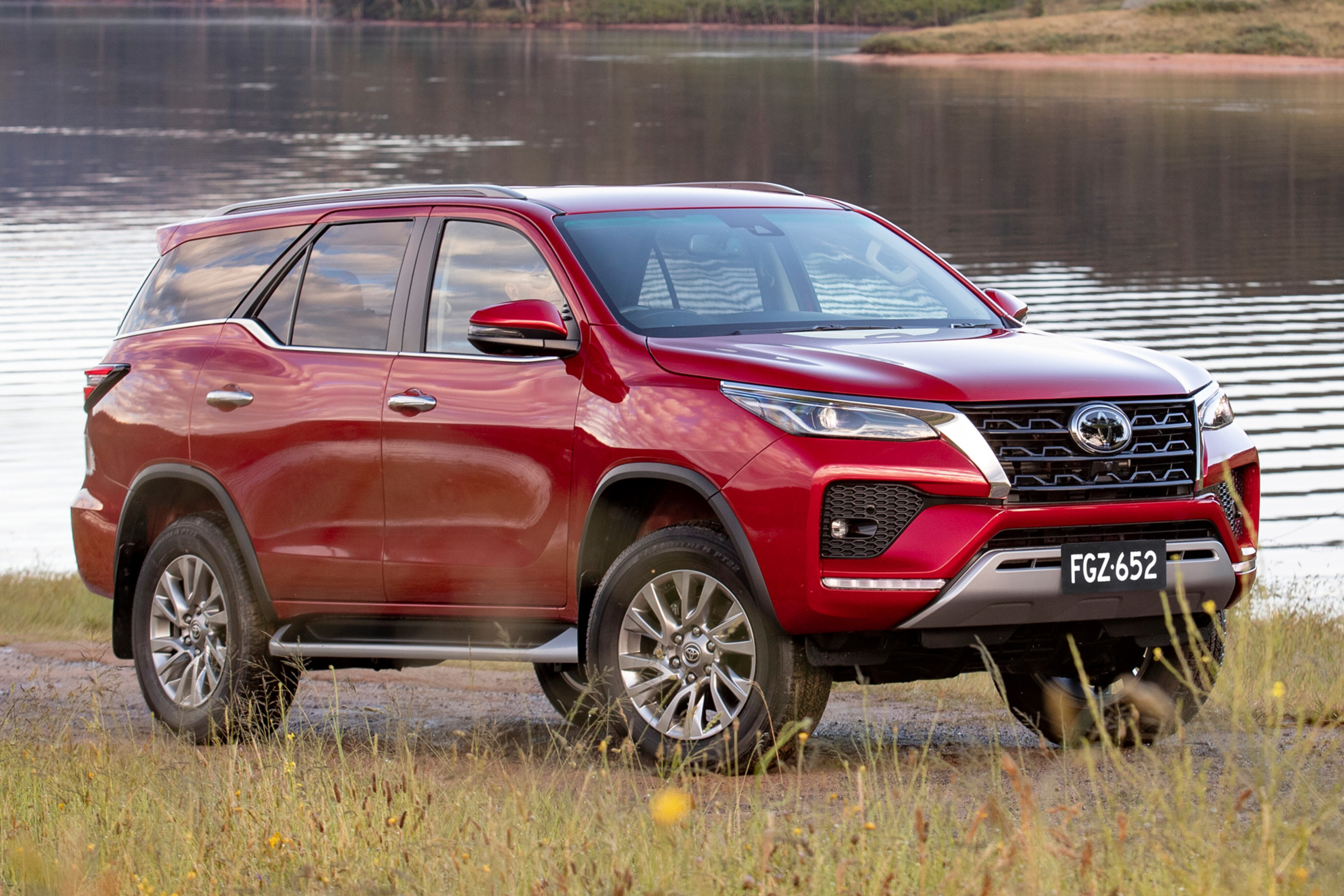
JUMP AHEAD
Pricing and features
For ultimate price savings, on paper the Mitsubishi Pajero Sport looks more attractive than the Toyota Fortuner.
At entry level, it has an almost $4000 saving on the GLX 4WD over the Toyota Fortuner GX. The key point of difference here is that the Mitsubishi is a five-seater only in GLX trim (the rest of the range do have seven seats), while all Toyota Fortuners have seven seats.
Both have a 3100kg/310kg (braked) towing limit, which is 400kg less than the best in class, although argualble more realistic for carrying both payload and a heavy trailer without exceeding GVM or GCM limits.
The Pajero Sport has an eight-speed auto whereas the Toyota has just six forward speeds in its auto box.
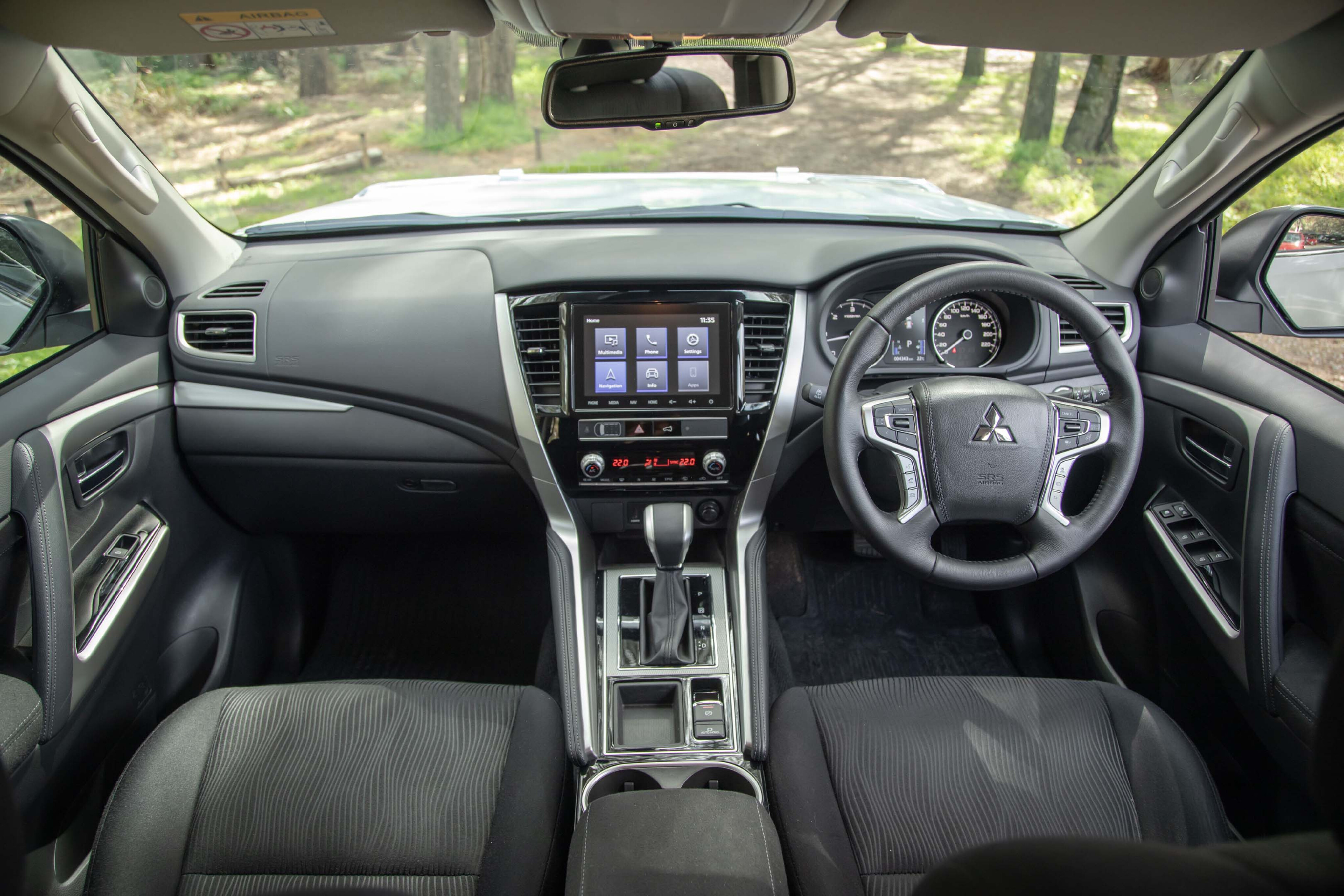
The Mitsubishi has a more sophisticated 4WD system with its Super Select II transfer case. This 4WD system basically means you have the addition of a 4WD setting that can be used on dry, paved roads.
The Toyota has part-time 4WD, which works as rear-drive only on paved surfaces and the driver needs to select 4WD slippery surfaces, and remember to select 2WD again back on dry paved roads to not do damage to the transmission..
The Mitsubishi and Toyota have similar specs in the two entry models, the Pajero Sport GLX and Fortuner GX. They both share a lot of standard features from adaptive cruise control, dusk-sensing, Bi-LED headlights, rain-sensing wipers, power windows, power-fold side mirrors, keyless entry and start, side steps, rear-view camera, rear parking sensors, lane-change assist, Autonomous Emergency Braking and rear differential lock.
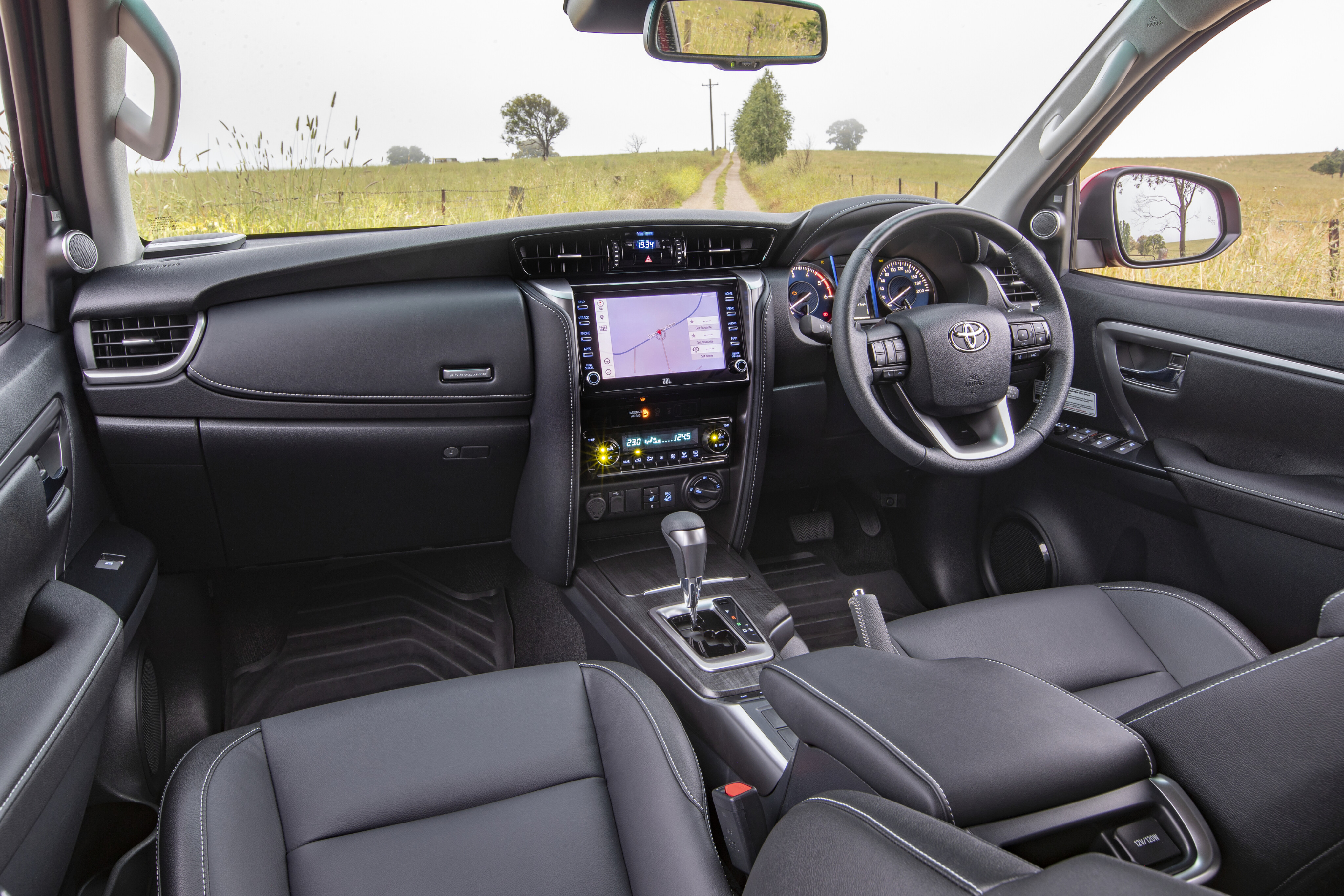
The entry level GLX has hill descent control and steering mounted paddle shifters where in the Fortuner range you need to spend on GXL or Crusade for these features.
The Pajero Sport GLX also has driver’s seat power lumbar adjustment. There are only four speakers in the entry Fortuner GX versus six in the Pajero Sport.
The entry-level Fortuner, the GX, has the seating capacity advantage with its seven seats over the Pajero Sport GLX’s five. It also provides superior safety features at this trim level, such as speed sign recognition and front parking sensors.
The next models up the ladder are the Pajero Sport GLS at $55,190 and the $58,895 Fortuner GXL (like all prices mentioned here, these are plus on-road costs).

Standard gear for both include embedded satnav, dual zone climate control, power tailgate, power fold side mirrors and rear privacy glass.
The Pajero Sport GLS gets an electrochromatic rear-vision mirror at this trim level that the Fortuner doesn’t, as well as a tyre pressure monitoring system not available in any Fortuner.
Following the mid-spec variants are the luxury models, the Pajero Sport Exceed and Fortuner Crusade. Both add to the lower spec already mentioned blind-spot warning, rear cross traffic alert and leather seats, heated and power adjustable at the front, and it’s here the Crusade gains a power tailgate and an electrochromatic rear vision mirror.
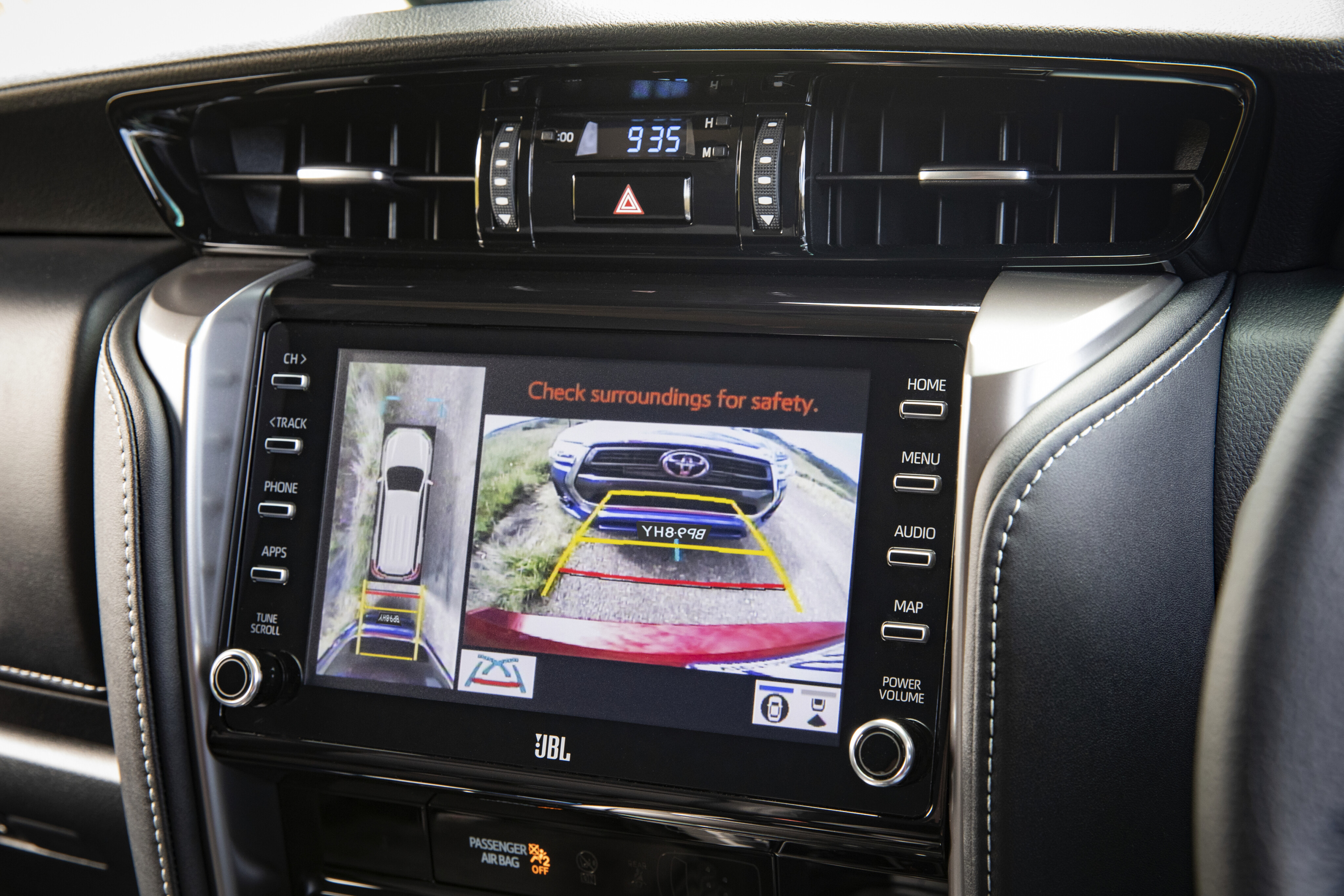
The Crusade offers a 11-speaker JBL premium audio system, where Exceed has an eight speaker ‘premium’ audio system.
While the Fortuner offers a three-tier model range stops at Crusade, the Pajero Sport goes one better – beyond the luxury Exceed model there’s a sporty GSR variant at the top of the model walk. This is basically an Exceed with an appearance package including black painted wheels and trim. There are no powertrain or suspension changes to make it more ‘sporty’.
Technology includes smartphone mirroring and an 8-inch screen on both vehicles. The Fortuner in all grades gets Toyota Connected Services, free for three years. This gives stolen vehicle tracking, automatic collision notification and SOS emergency call via an embedded SIM card.

The Pajero Sport received a five-star ANCAP safety rating when released back in 2015 - albeit under more lenient guidelines than today’s standards. Because the ANCAP ratings have changed, it is now technically ‘unrated’.
Meanwhile, a five-star score was awarded to the Toyota Fortuner with testing conducted in 2019.
The large SUV scored an extremely impressive 95% score for adult occupant protection 84% for children.

| 2023 Mitsubishi Pajero-Sport variant | Fuel consumption | Power | Torque | Price |
|---|---|---|---|---|
| Pajero Sport GLX | 8.0L/100km | 133kW | 430Nm | $49,940 |
| Pajero Sport GLS | 8.0L/100km | 133kW | 430Nm | $55,190 |
| Pajero Sport Exceed | 8.0L/100km | 133kW | 430Nm | $60,690 |
| Pajero Sport GSR | 8.0L/100km | 133kW | 430Nm | $62,440 |
| 2023 Toyota Fortuner variant | Fuel consumption | Power | Torque | Price |
|---|---|---|---|---|
| Fortuner GX | 7.6L/100km | 150kW | 500Nm | $53,775 |
| Fortuner GXL | 7.6L/100km | 150kW | 500Nm | $58,895 |
| Fortuner Crusade | 7.6L/100km | 150kW | 500Nm | $66,755 |
The large 4x4 wagon category starting under $60K has another seven contenders: the Ford Everest ($58,290-$77,000), GWM Tank ($46,990-$60,990), Isuzu MU-X (LDV D90 ($46,832-$52,095), Mahindra Scorpio ($41,990-$45,990) and SsangYong Rexton ($47,990-$56,585. All prices except the GWM, LDV, Mahindra and SsangYong are plus on-road costs.

What would have been included (until they became too expensive) are the Jeep Grand Cherokee ($77,950-$129,950) and Toyota Prado ($62,830-$87,468).
Of the above vehicles, the Ford Everest and Isuzu MU-X (both also based on ute models) are the closest competitors to the Pajero Sport and Fortuner.
| Scoring | Pajero Sport | Fortuner |
|---|---|---|
| Pricing and features | 8 | 7.5 |
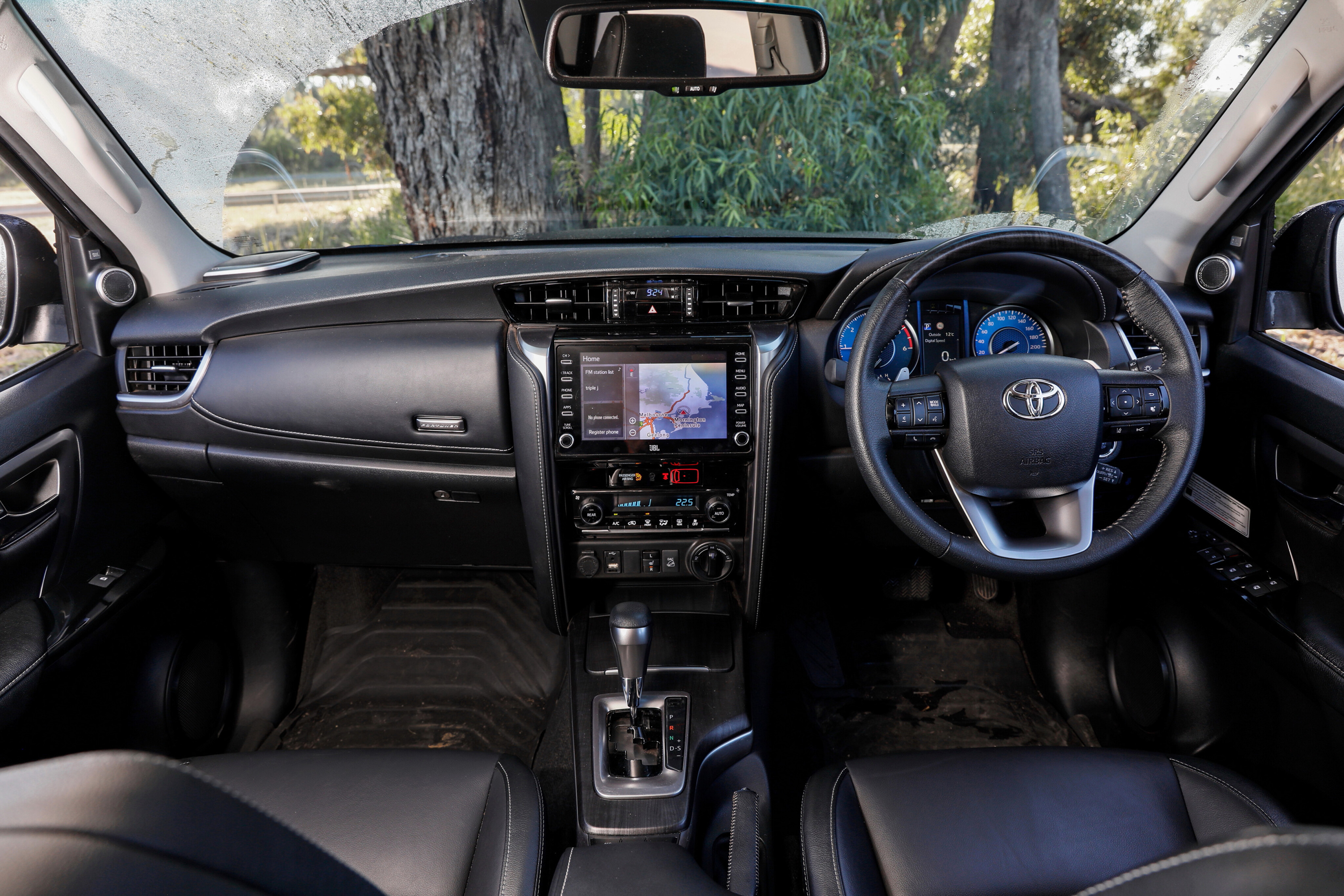
Comfort and space
Both vehicles need a bit of a step up to get into, each obviously an older body-on-chassis philosophy where seats seems close to the floor.
The Fortuner is getting a little long in the tooth, though, and the analogue dials, old-school infotainment system and the plethora of curved edges stamp its time card pretty convincingly. Yet the Fortuner’s cabin is roomy, comfortable, and impressively quiet, thanks to soundproofing that isolates a lot of the tyre and road noise.
It’s an easy and relaxing place to sit on long journeys. The cabin’s layout is also simple and easy to navigate. And while the interior finish feels more commercial vehicle than premium passenger car, most of the hard plastics are suitably durable.
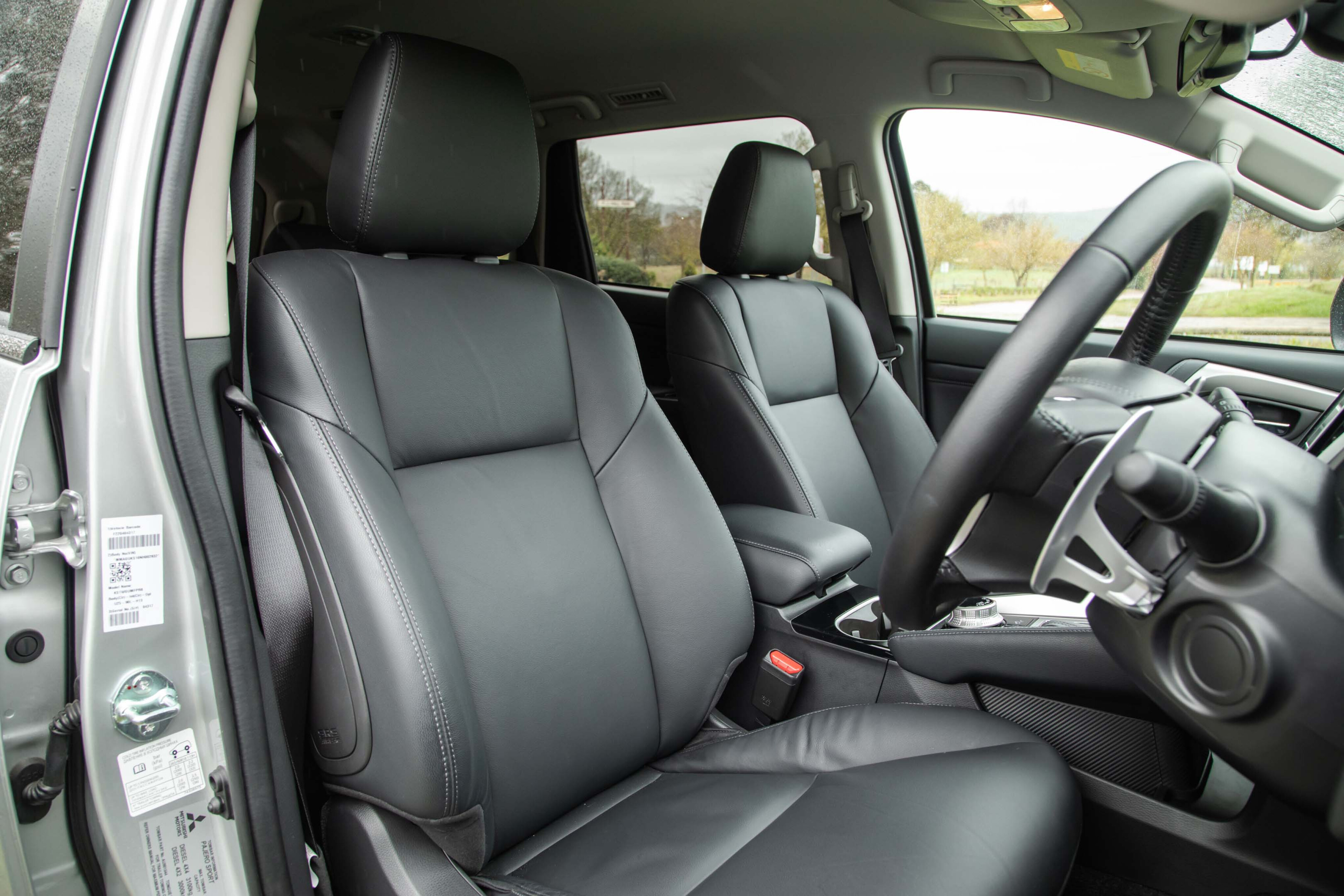
However that doesn’t mean the Pajero Sport feels cheap, especially when you get to the upper-tier leather lined Exceed or GSR models, which in fact benefit from a fully digital dash the Fortuner lacks at any trim level.
Where both models most clearly shows their age inside the cabin is with the eight-inch touchscreen, which is small by modern standards.

Storage space: Mitsubishi Pajero Sport vs Toyota Fortuner
| Boot space | Pajero Sport | Fortuner |
|---|---|---|
| Behind 3rd row | 131L | N/A |
| Behind 2nd row | 502L | 654L |
| Behind 1st row | 2138L | N/A |
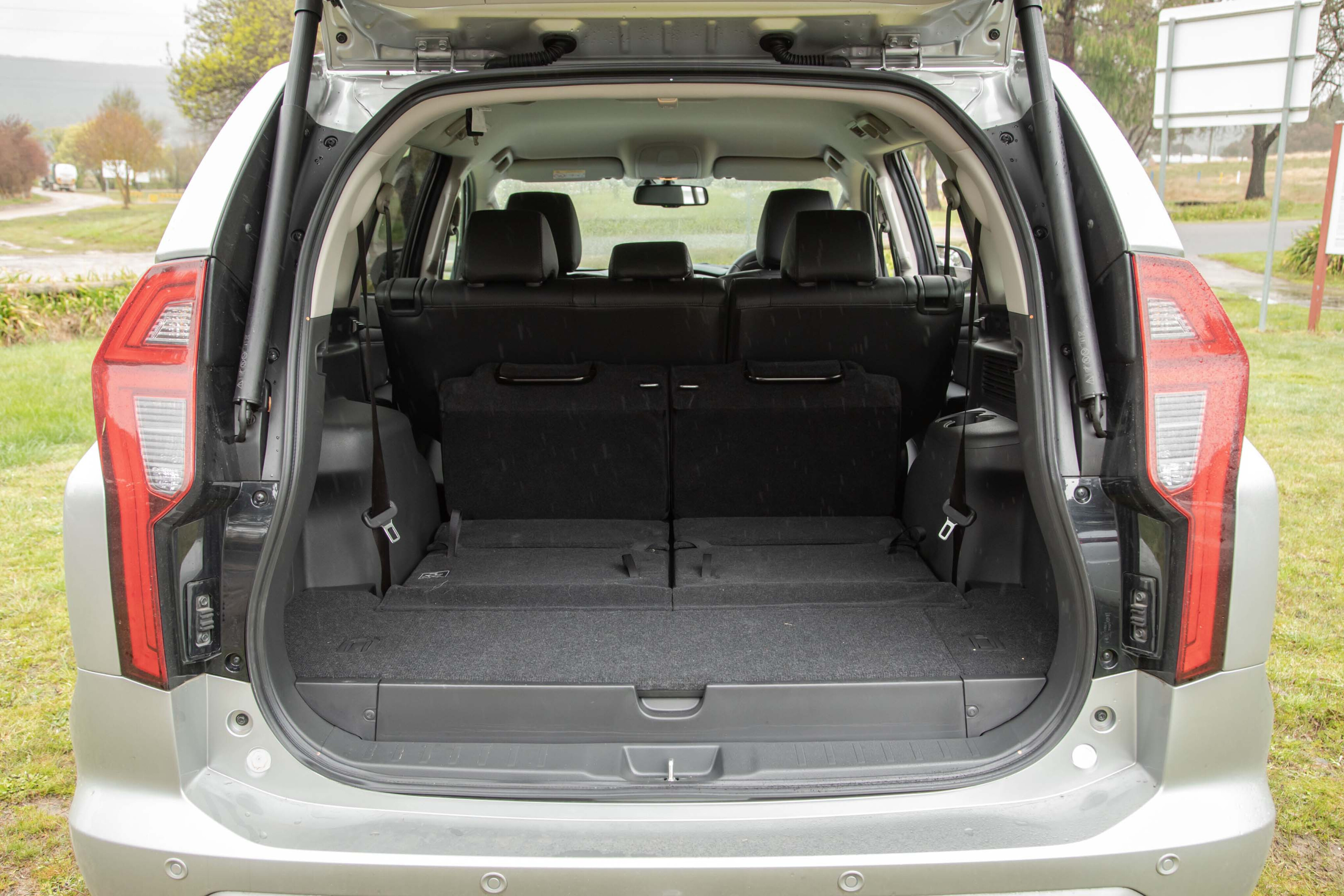
The Pajero Sport and Fortuner are very close in cabin space and amenity.
The Fortuner’s second row of seats that slides forward and back boosts interior flexibility: second-row passengers can maximise their leg room or can add leg room for people riding in the third row.
The second row seat doesn’t slide forward for third-row access in the Pajero Sport.
| Scoring | Pajero Sport | Fortuner |
|---|---|---|
| Comfort and space | 8 | 8.5 |
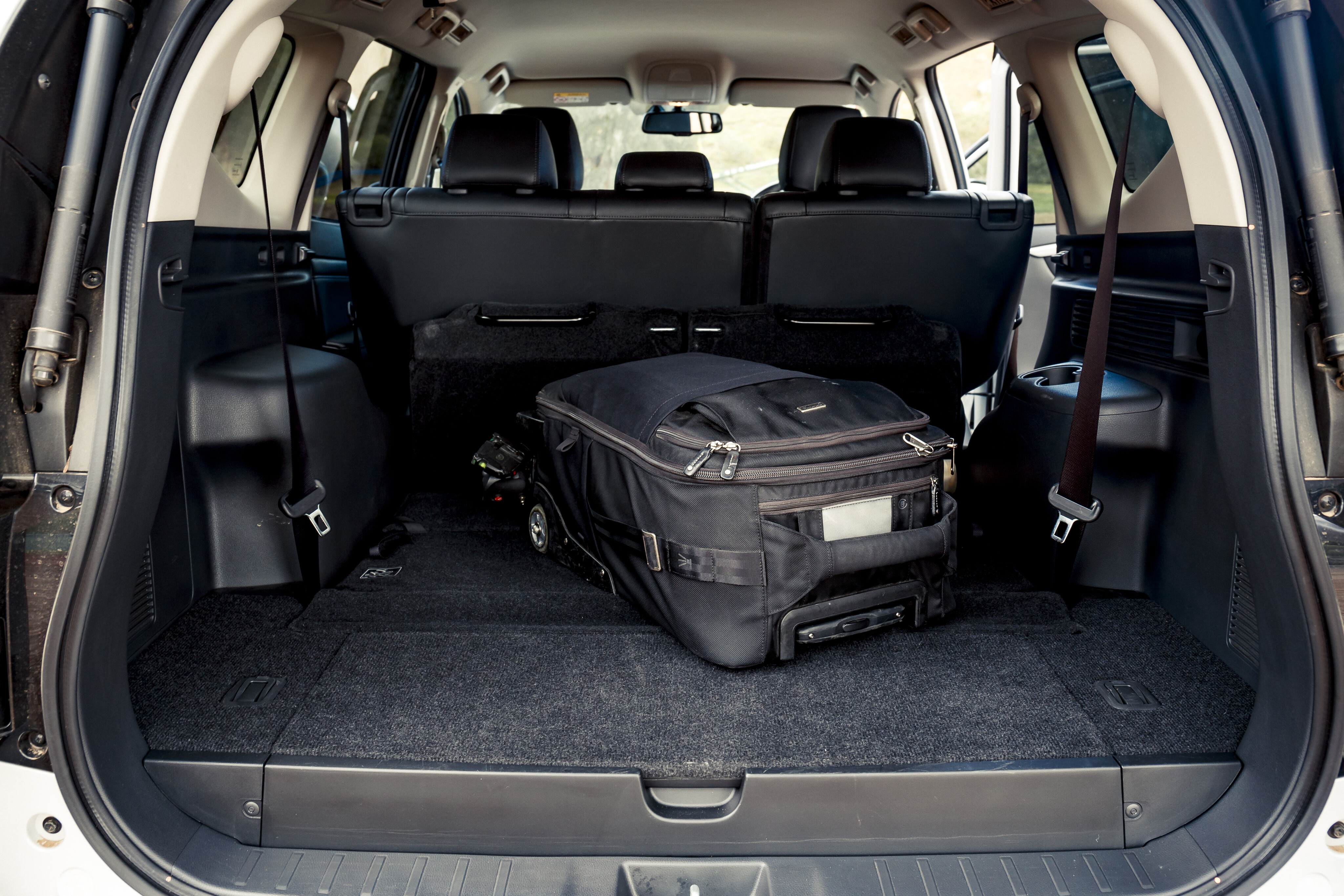
On the road
The Pajero Sport’s ability to adapt to both tarmac and dirt is one of its most endearing attributes.
Its 2.4-litre MIVEC DID turbo-diesel engine may be slightly underpowered in its attempt to push the weight (2209kg for GSR), and you can hear it working hard to do so, but it’s not a mitigating factor. The engine is actually relatively quiet, if a little underpowered.
The Mitsubishi is also not the most refined when travelling on long stretches of bitumen. The eight-speed automatic transmission feels well-calibrated and smooth by large SUV standards.
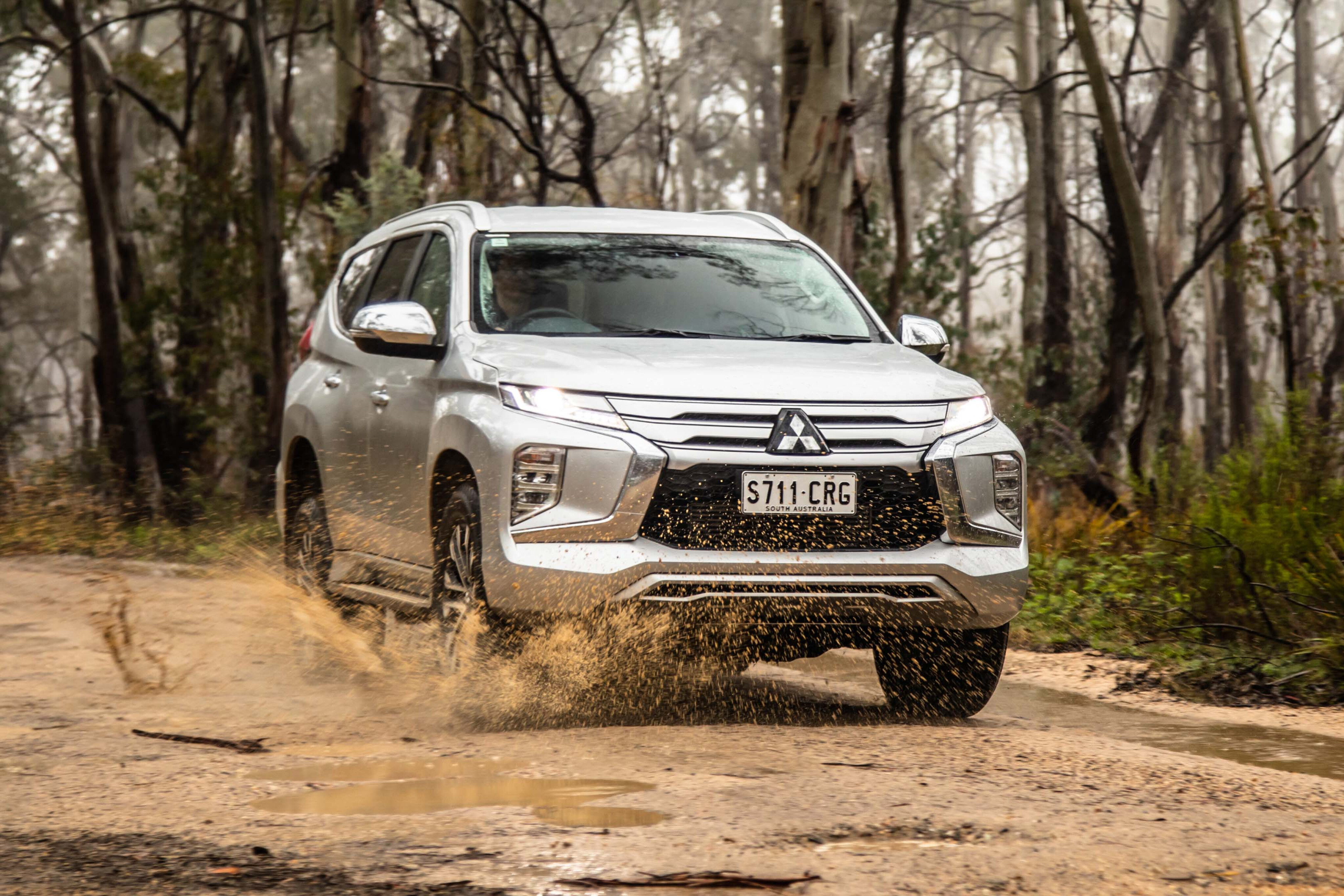
The Fortuner’s diesel engine exhibits some gruff diesel clatter around town but it is quiet at freeway speeds.
It supplies enough grunt for comfortable highway cruising and hill-climbing, and accelerates moderately when overtaking.
The biggest dynamic let downs are slow steering that does not feel intimately connected with the front wheels, and the rear wheels’ tendency to skip and move around over corrugations – a legacy of the ute-based, live-axle rear suspension.
| Scoring | Pajero Sport | Fortuner |
|---|---|---|
| On the road | 7 | 7.5 |
If any of the terms in this section have left you scratching your head, these articles will help bring you up to speed!
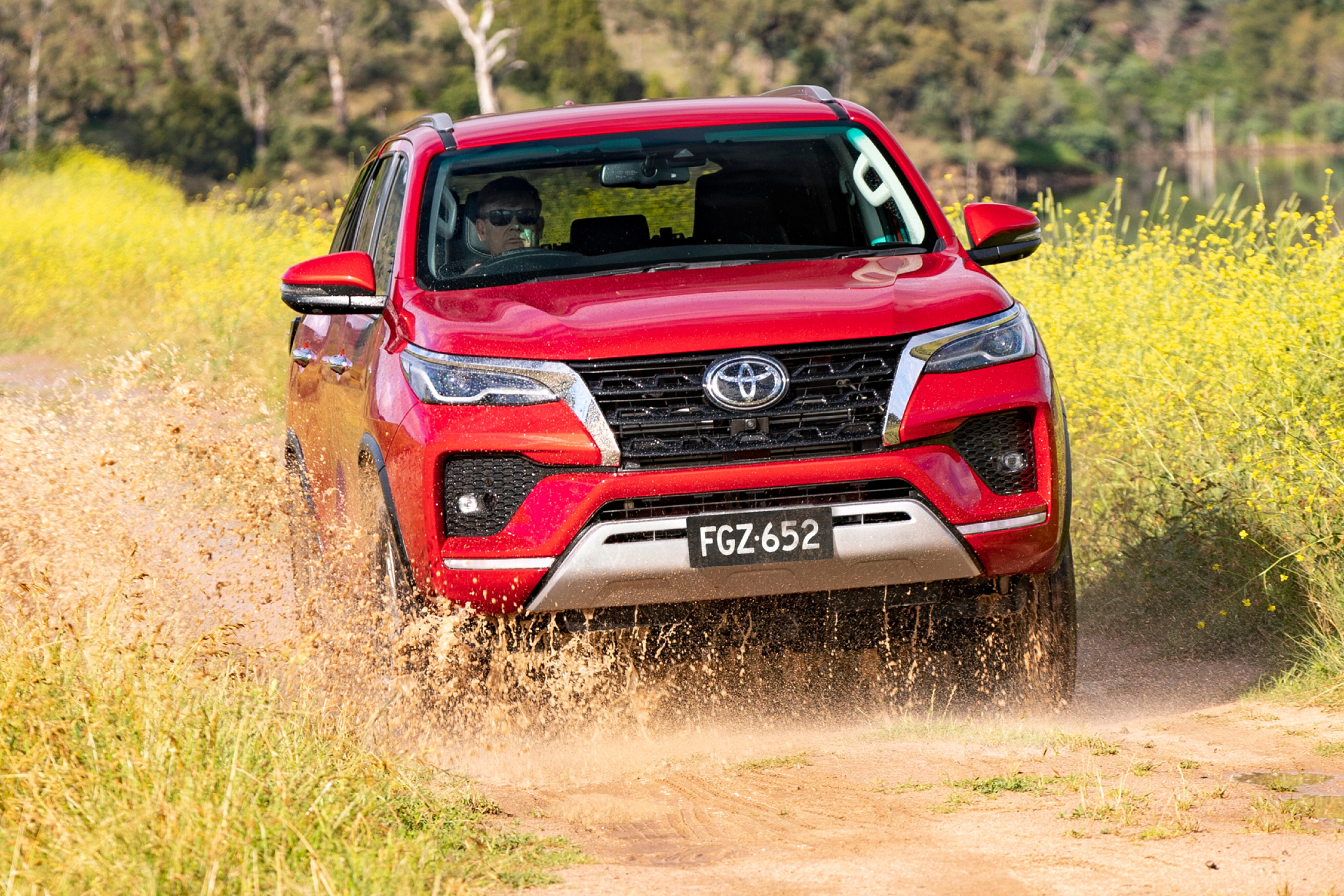
Ownership
Mitsubishi is industry leading when it comes to after-sales support, with all Mitsubishi vehicles covered by a five-year/100,000km vehicle warranty, that extends to a 10-year or 200,000km warranty if owners keep scheduled servicing with Mitsubishi.
Servicing intervals are every 12 months or 15,000km, whichever comes first. Mitsubishi will also cap servicing costs for the first ten years or 150,000km, and includes 10 years roadside assist provided services are done yearly at Mitsubishi.
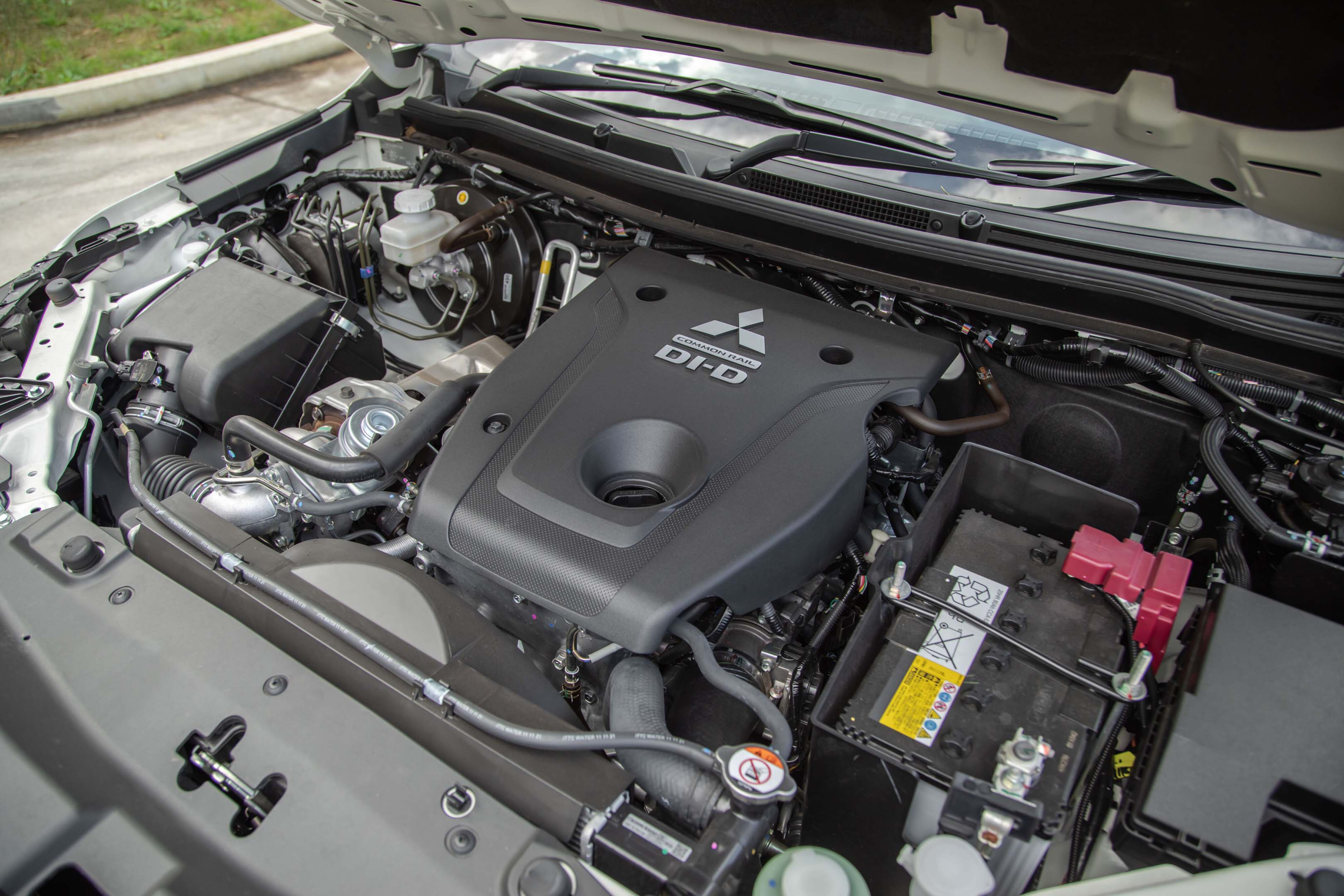
Meanwhile the Toyota comes standard with a five-year/unlimited km warranty. Roadside assistance is covered for up to seven years, if the call-out was caused by a defect with the vehicle covered by warranty.
If you stick to the annual service schedule, Toyota will extend the engine and driveline warranty from five to seven years, The CPS Program covers the first seven scheduled services, due every 12 months or 15,000km.
| Mitsubishi warranty coverage | |
|---|---|
| Warranty | 10 years 200,000km |
| Roadside assistance | 10 years |
| Capped price servicing | 10 years |
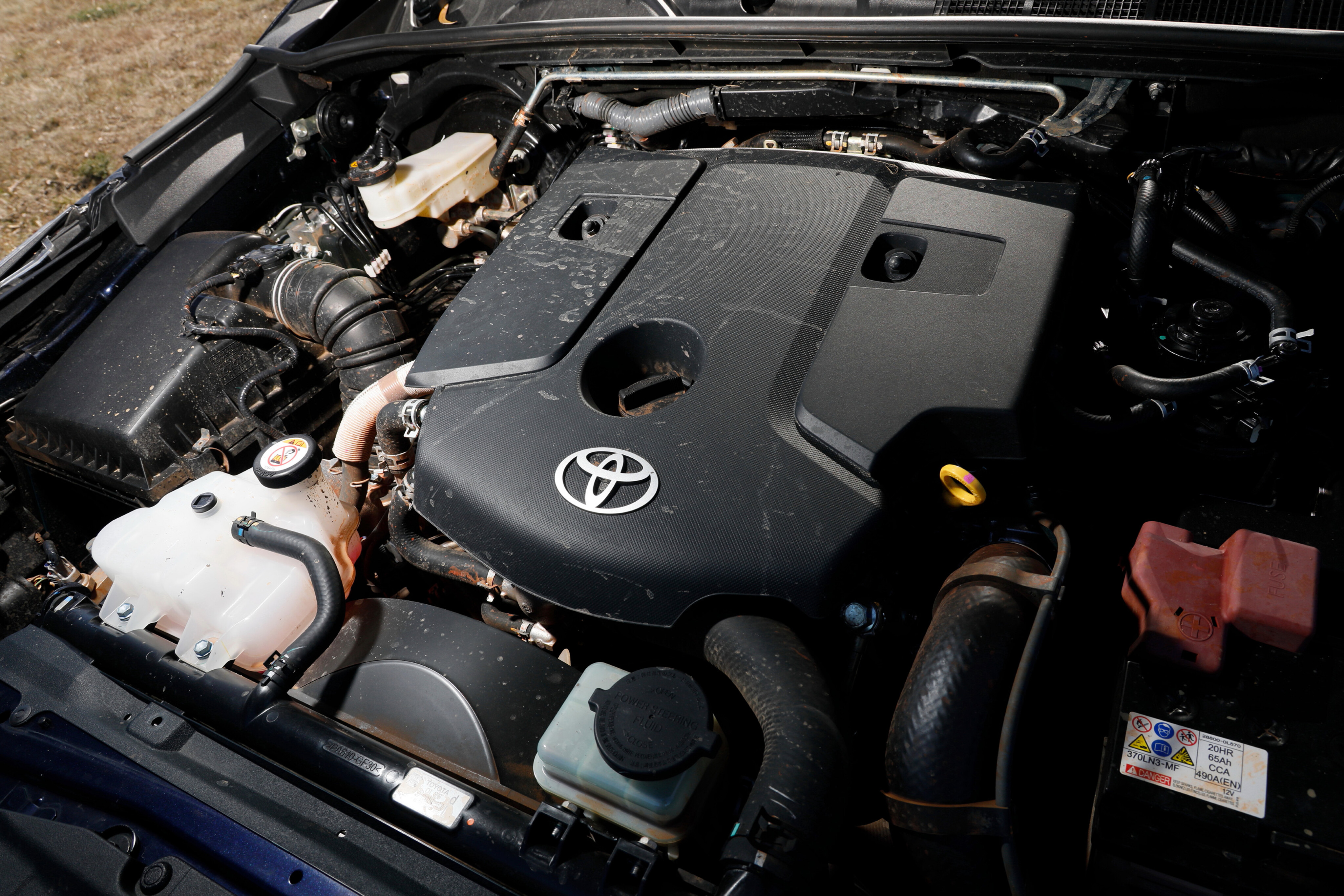
| Toyota warranty coverage | |
|---|---|
| Warranty | Five years unlimited km |
| Roadside assistance | Seven years |
| Capped price servicing | Five years |
| Scoring | Pajero Sport | Fortuner |
|---|---|---|
| Ownership | 8 | 7.5 |
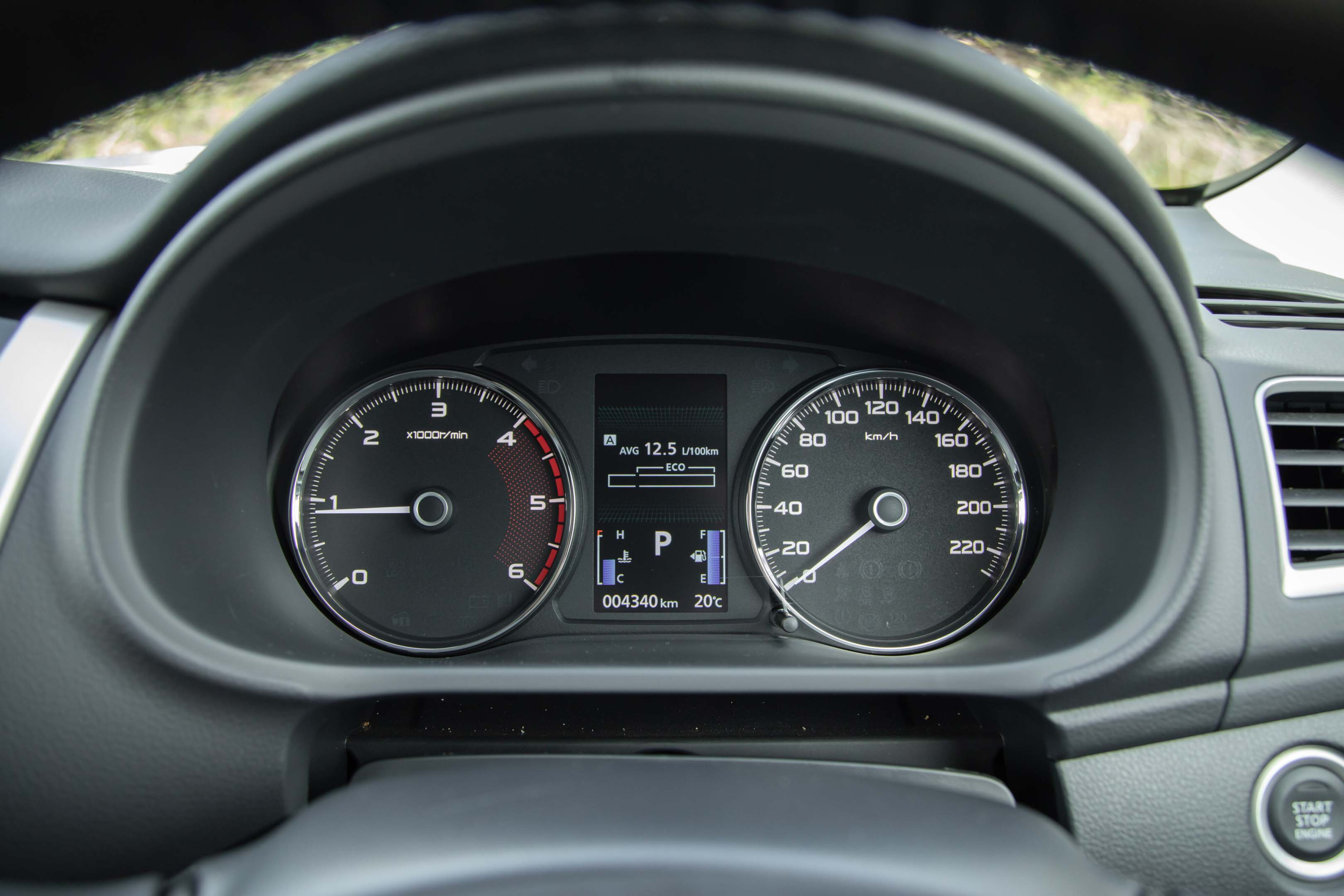
VERDICT
That Mitsubishi has kept the Pajero Sport relatively fresh yet attractively priced over eight years in a fast-developing market is a testament to the clarity of the original design.
It offers plenty of tech and comfort features for not much money, and its 4WD system is very good – as is the efficient, if not powerful engine. However, there’s no denying it is fast becoming outdated against more advanced and sophisticated machines – such as the MU-X.
The Pajero Sport also lacks a safety rating now, and also lacks a 3500kg towing capacity for those that consider that important.
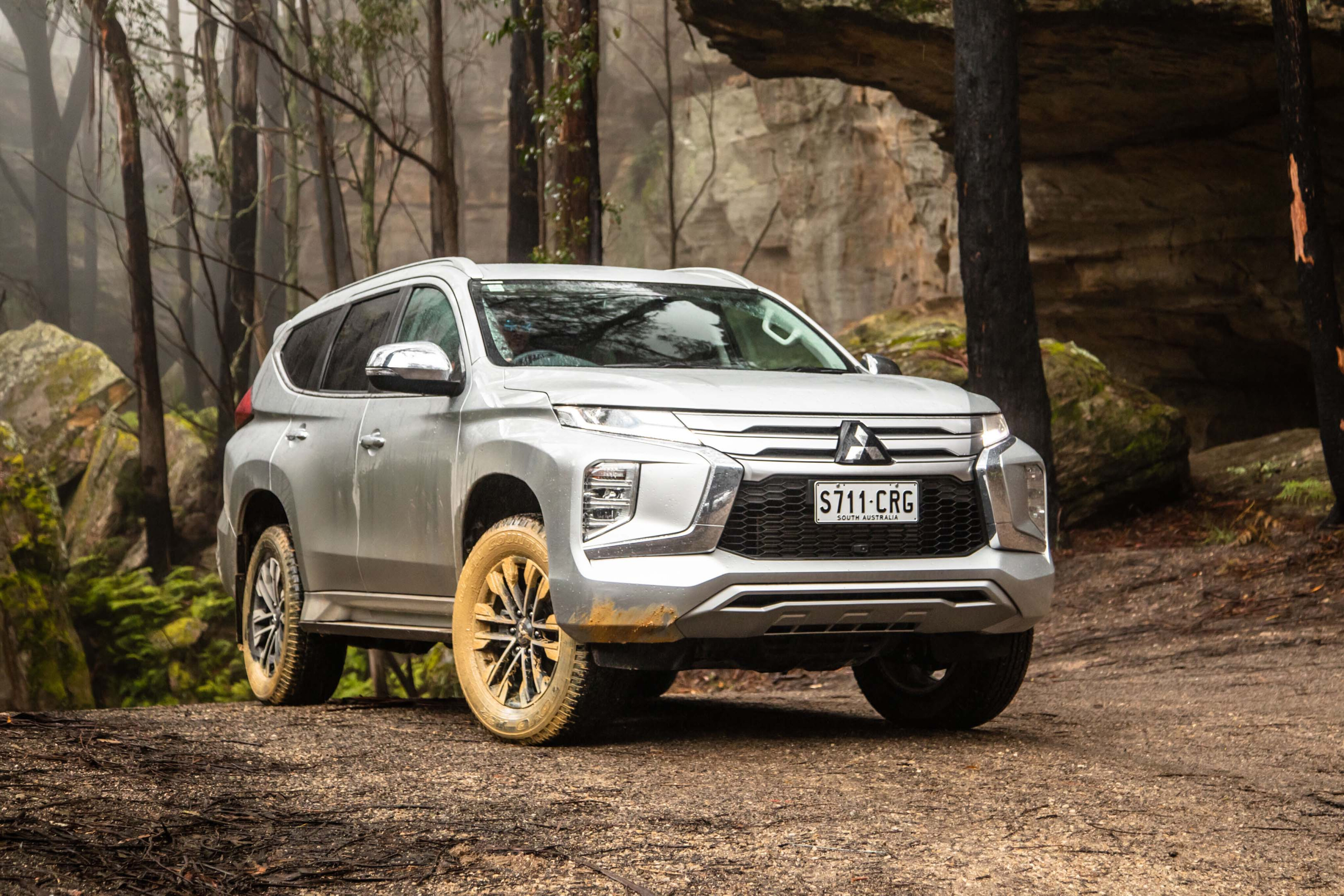
Meanwhile, the Toyota Fortuner drives respectably for a ute-based SUV. is a hardy family wagon that’s good off-road but not quite as good on the road as less rugged alternatives.
It’s neck-and-neck between these two models, with the better 4WD system, features and value going to the Pajero Sport, although the more up-to-date (and still current) ANCAP safety rating is also compelling for the Fortuner.
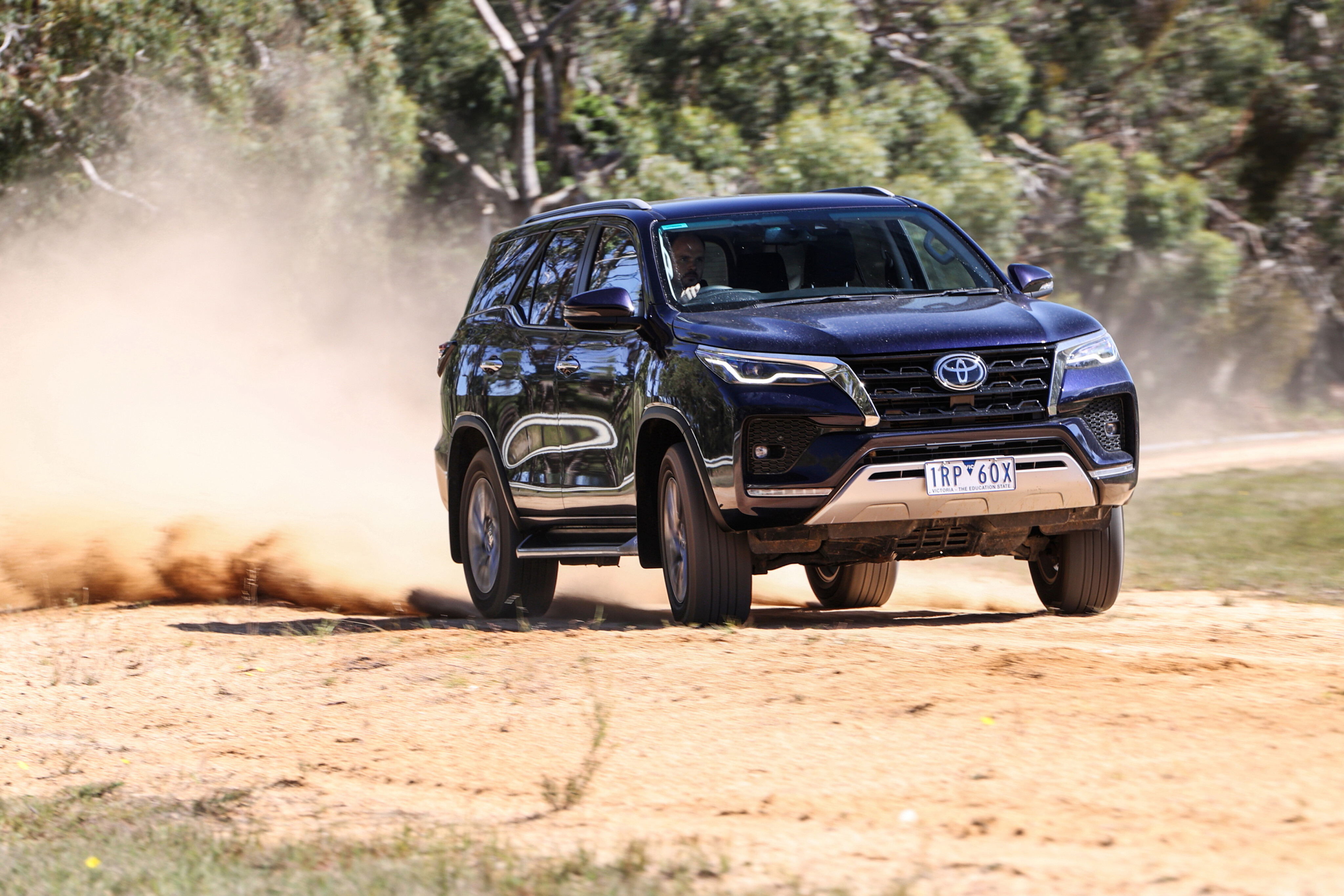
OVERALL SCORING: 2023 Mitsubishi Pajero Sport v 2023 Toyota Fortuner
| Overall scoring | Pajero Sport | Fortuner |
|---|---|---|
| Pricing and features | 8 | 7.5 |
| Comfort and space | 8 | 8.5 |
| On the road | 7 | 7.5 |
| Ownership | 8 | 7.5 |
| OVERALL | 8 | 7.5 |
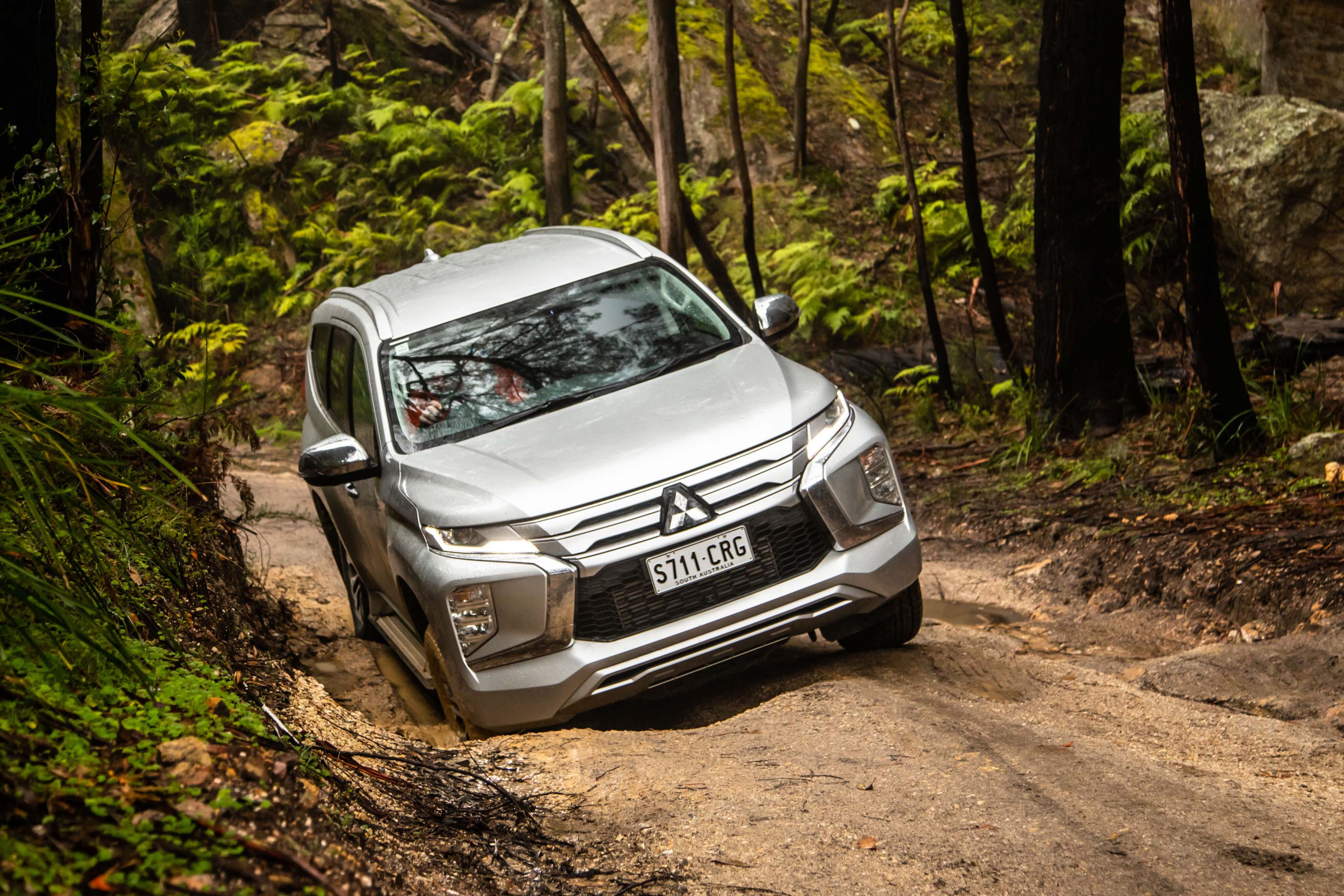
| Mitsubishi Pajero Sport Toyota Fortuner | Toyota Fortuner | |
|---|---|---|
| Body | 5-door, 7-seat large SUV | 5-door, 5/7-seat large SUV |
| Engine | I4 diesel | I4 diesel |
| Transmission | 8-speed automatic | 6-speed automatic |
| Power | 133kW at 3500rpm | 150kW at 3000-3400rpm |
| Torque | 430Nm at 1600-2600rpm | 500Nm at 1600-2800rpm |
| ADR fuel claim | 8.0L/100km | 7.6L/100km |
| Weight | From 2145kg | From 2175kg |
| Suspension FR/RR | IFS/live axle | IFS/live axle |
| L/W/H (mm) | 4825x1815x1835 | 4795x1855x1835 |
| Wheelbase (mm) | 2800 | 2745 |
| Tyres | 265/60R18 | 265/65R17 |
| Wheels | 18-inch alloy | 17-inch alloy |
| Price | From $49,940 | From $53,775 |
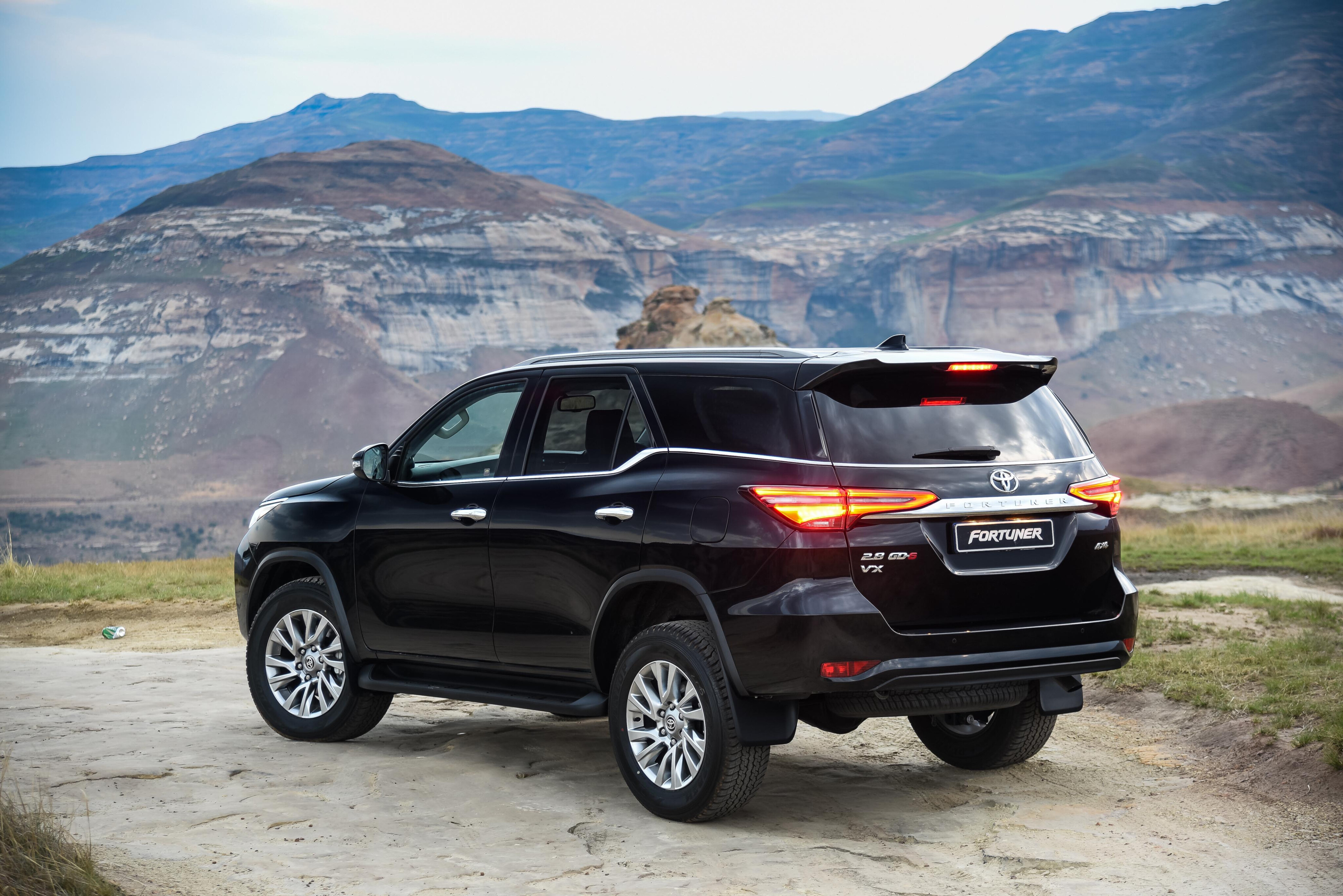
Scores from single car reviews
| Pajero Sport | Fortuner | |
|---|---|---|
| Safety, value and features | 7 | 6 |
| Comfort and space | 8.5 | 6 |
| Engine and gearbox | 7 | 6 |
| Ride and handling | 7.5 | 6 |
| Technology | 7 | 6 |
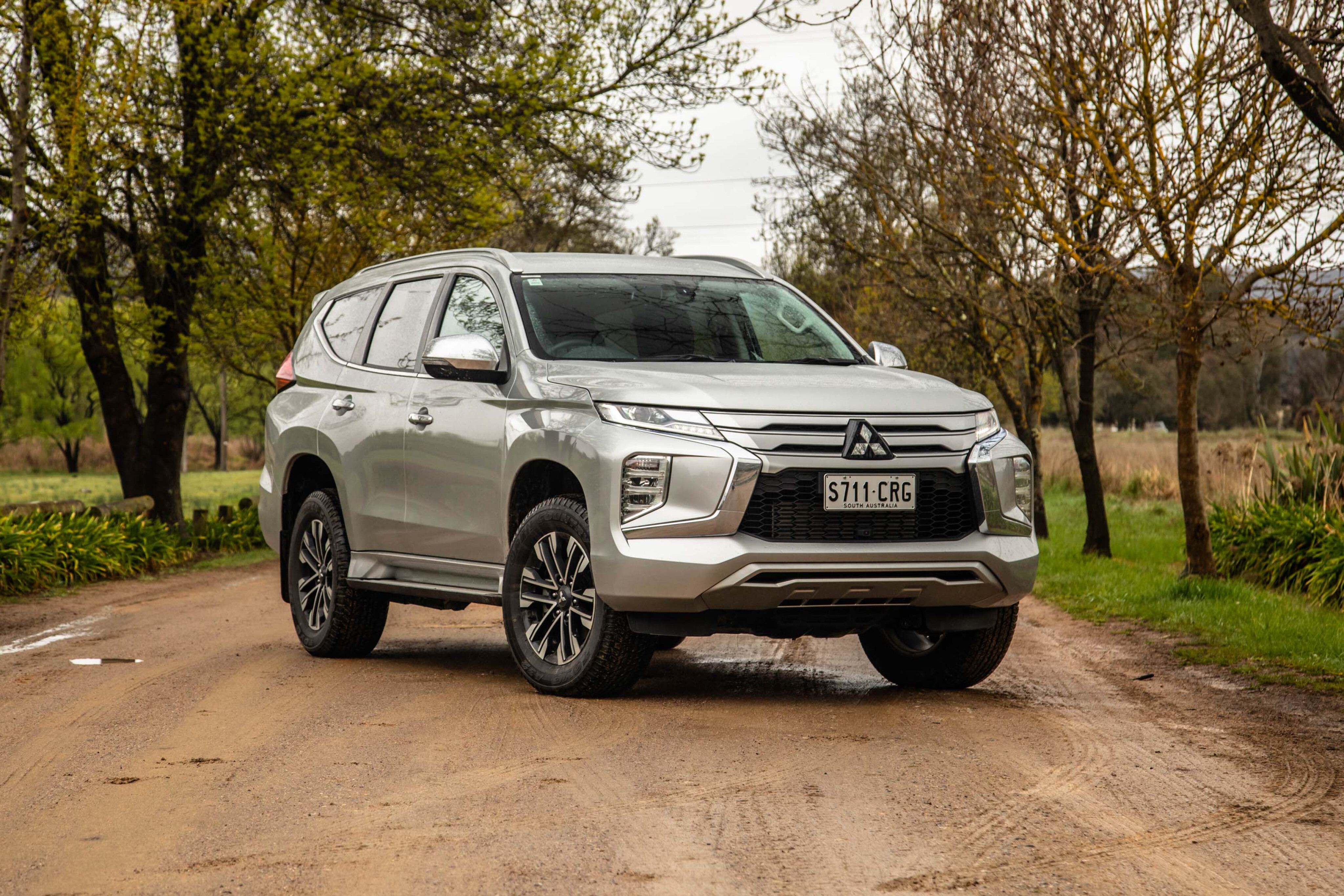
2023 Mitsubishi Pajero Sport
Things we like
- Industry-leading warranty and servicing
- Economical engine
- Well-featured for a low price
Not so much...
- Short on tow capacity
- Ride quality
- No safety rating
2023 Toyota Fortuner
Things we like
- Great off-road
- Spacious inside
- Toyota service network
Not so much...
- Gruff diesel engine
- Lacks towing capacity
- Ride quality

COMMENTS